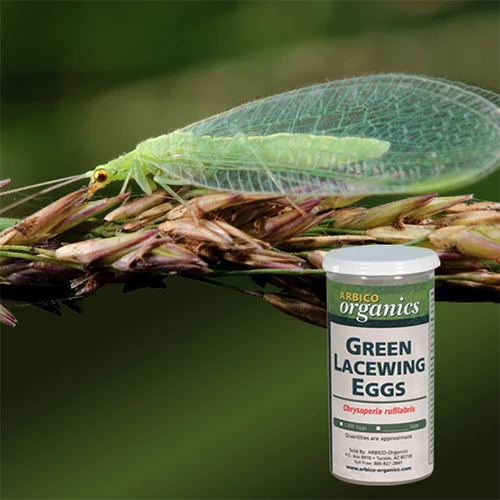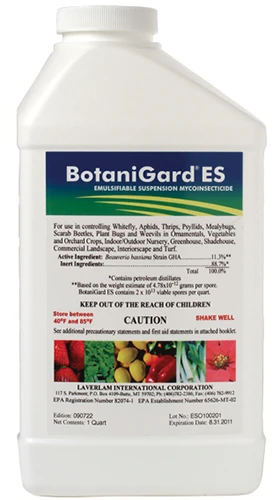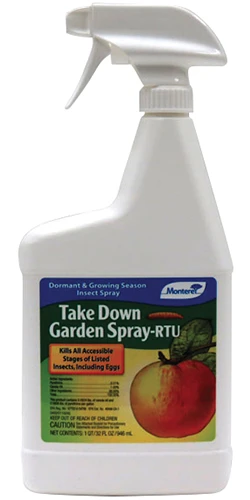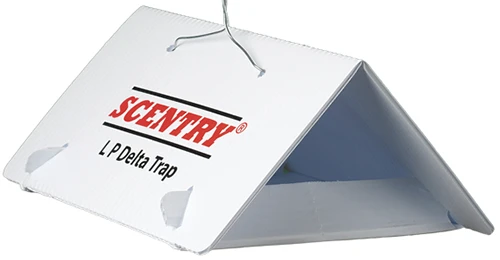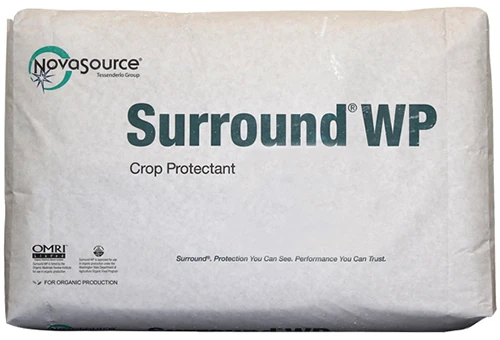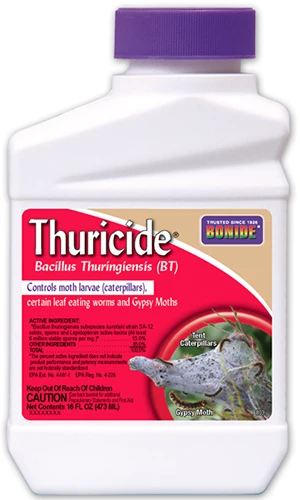If you’re growing apple trees, I’m sorry to say you’re almost certainly going to become acquainted with one (or more) of the pests on this list at some point.
I’m not saying that in the case of an infestation your trees are necessarily toast, but there are a lot of pests that like them and many of these are pretty common.
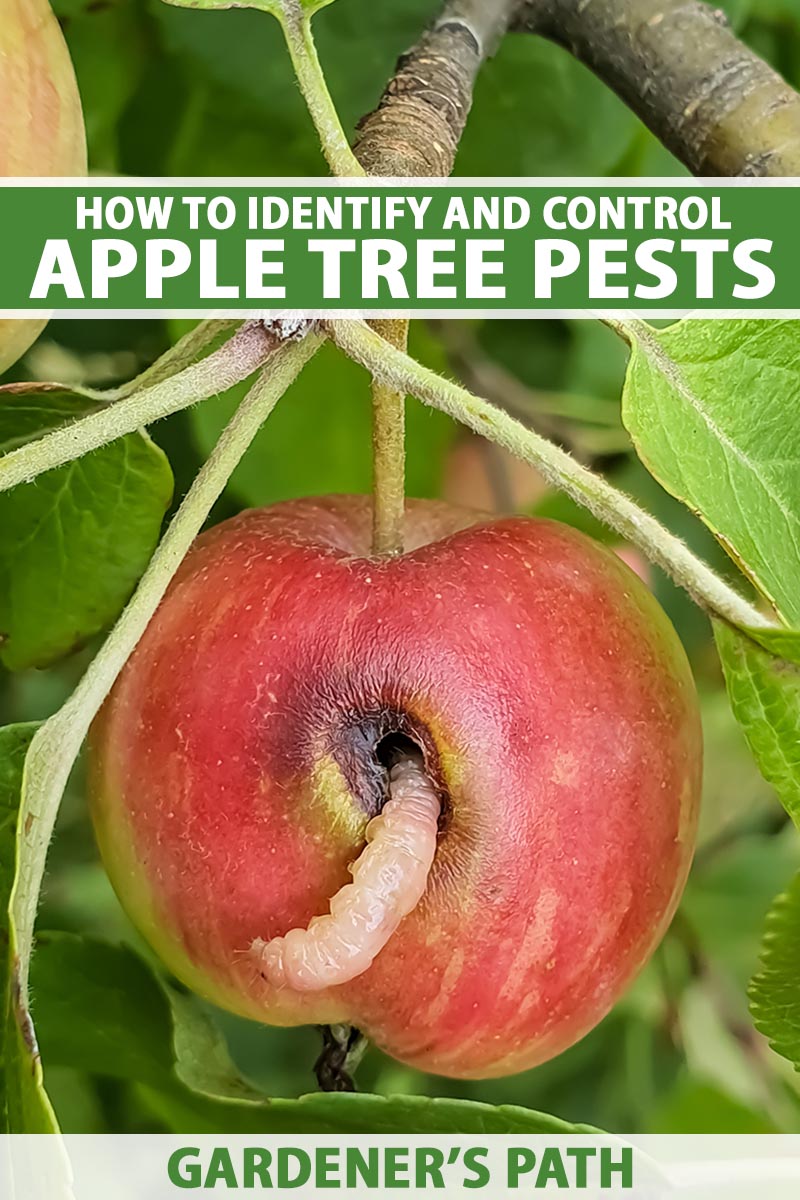
We link to vendors to help you find relevant products. If you buy from one of our links, we may earn a commission.
Don’t be mad at me, I’m just the messenger. I mean, it’s not just a coincidence that iconic apple imagery often includes the presence of a worm.
So, with the bad news out of the way, I can tell you the good news. For the most part, none of these pests will kill your trees. At worst, they’ll usually just do a number on your harvest.
Still, if you’re like me, you don’t want to share your harvest with a bunch of freeloading pests. So here are the most common ones you need to watch for:
11 Common Apple Pests
There’s no time like the present to start slaying our foes, so let’s jump right in:
1. Aphids
When I first saw woolly apple aphids (Eriosoma lanigerum), I have to admit I was more fascinated than annoyed, the latter being my usual reaction to the presence of aphids.
Woolly aphids are almost cute with their cottony, waxy coating.
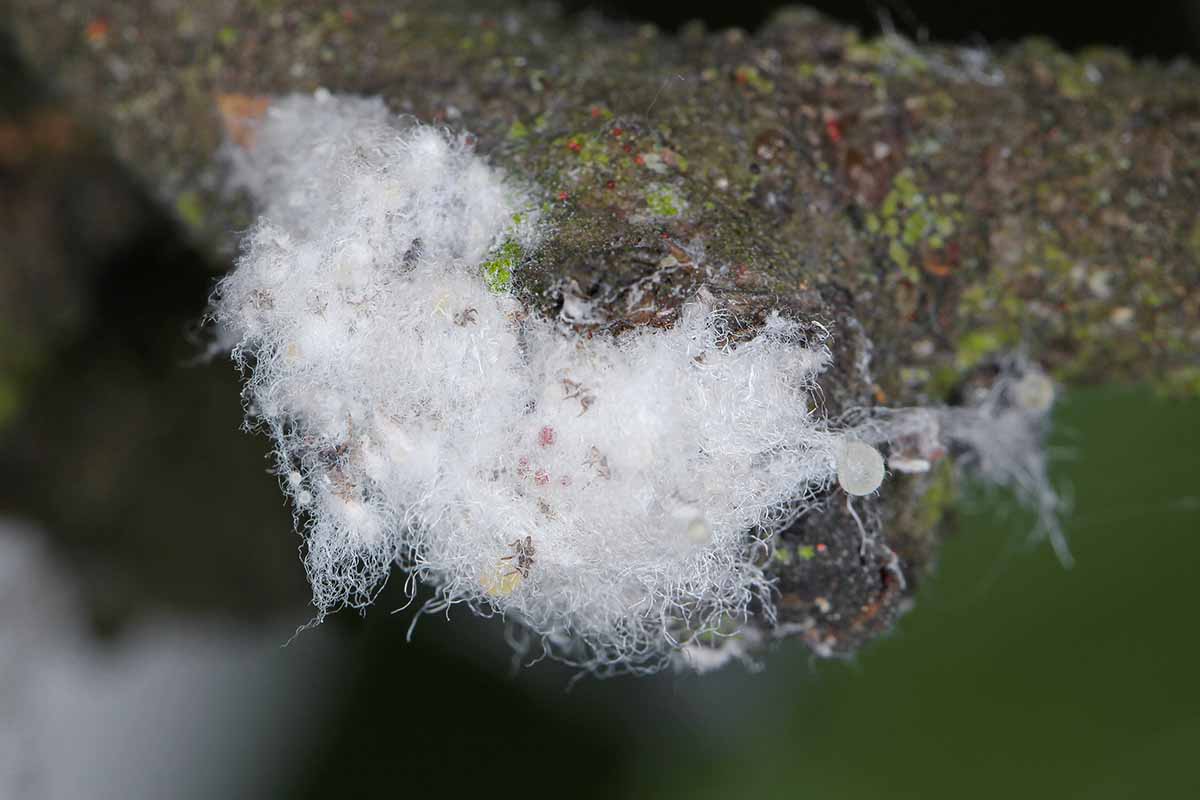
Still, they don’t get a pass just because of their interesting appearance.
Neither do the other types of aphids that feed on apples, like rosy apple aphids (Dysaphis plantaginea) and green apple aphids (Aphis pomi).
Green and rosy types feed on the shoots, buds, and leaves, causing distorted growth and curled leaves.
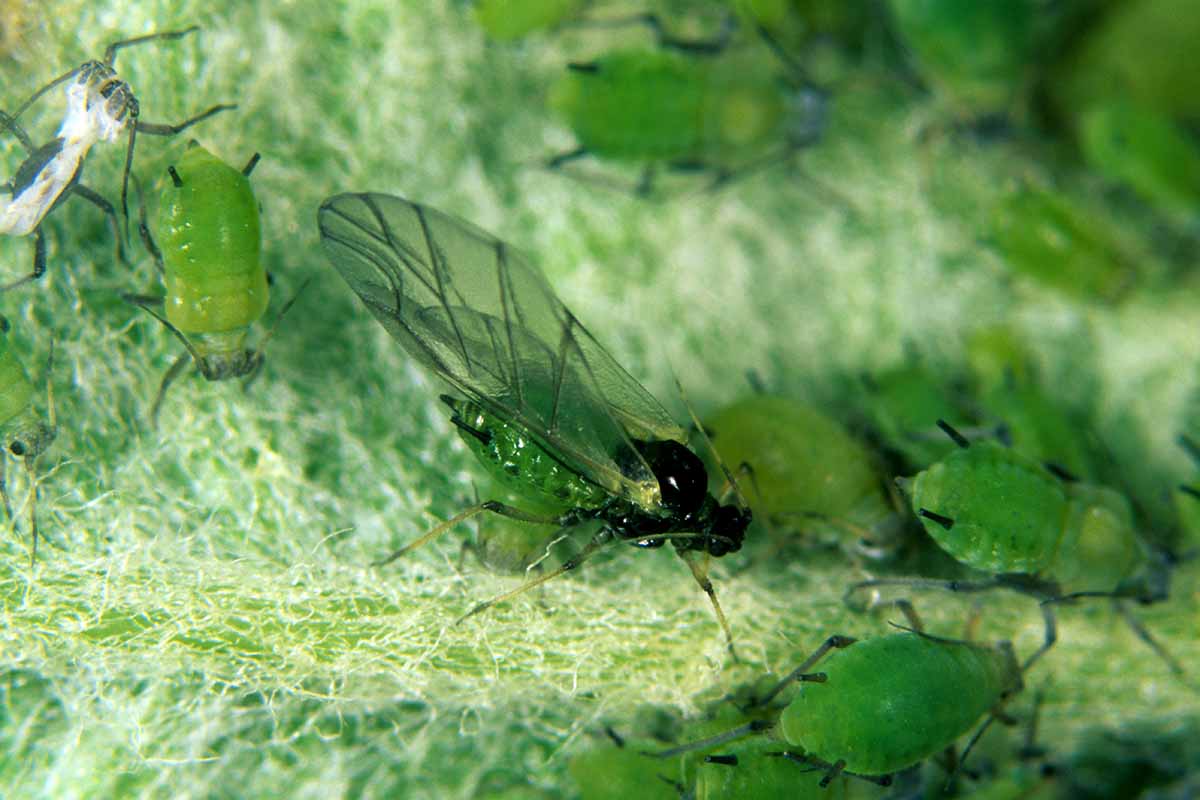
Woolly apple aphids are a whole other matter. These pests feed on the shoots, branches, and roots.
They stop being cute when you realize that their feeding causes galls on the roots and twigs. These galls can crack open, exposing the tree to disease.
An infestation of woolly aphids can greatly reduce the health of established trees and even kill young specimens.
All three types of aphids leave behind a sticky honeydew that attracts sooty mold.
A few aphids are no big deal, but if you have a large infestation you’re in trouble.
If you have a woolly aphid infestation, you’re going to need to ramp up your control. In addition to introducing beneficial predators like lacewings, you can use insecticidal soap in the spring as the buds are opening.
Green lacewings (Chrysoperla rufilabris) adore aphids and so long as you have them in your garden, they’ll stick around for the meal.
You can purchase eggs that are ready to hatch into hungry adults at Arbico Organics.
After the insecticidal soap application in spring, switch to a product that contains the beneficial fungus Beauveria bassiana to kill the adults.
Something like BotaniGard ES, which is available at Arbico Organics in quart- or gallon-sized options will do nicely. Spray once a month throughout the growing season.
To learn more about how to deal with aphids, visit our guide.
2. Apple Maggots
Apple maggots (Rhagoletis pomonella) are easily confused with codling moth larvae, which we discuss below, but they’re different pests entirely.
The adult flies lay eggs in the fruit, which cause small indentations on the surface. When the eggs hatch, the larvae tunnel into the fruit, feeding as they go.
The apples eventually become discolored, misshapen, and rotten.
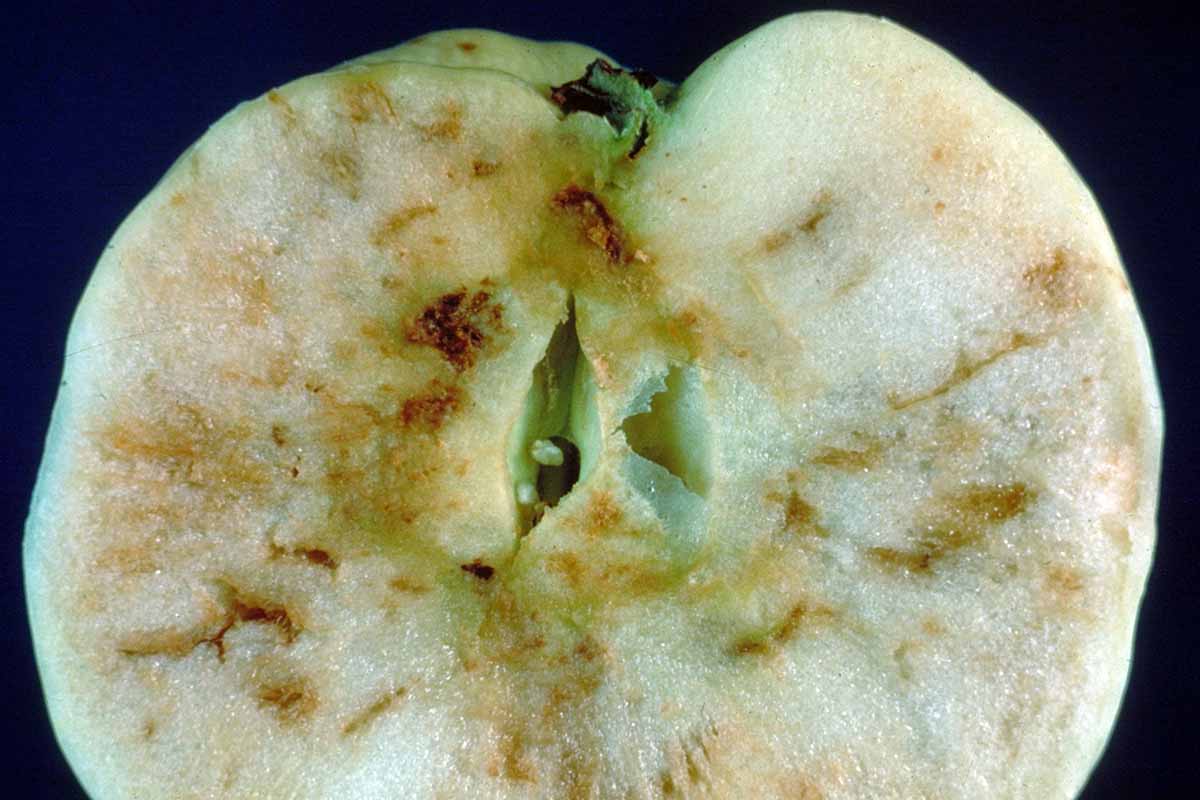
Where codling moth larvae tunnel in and out of the fruit, it’s not uncommon for apple maggots to stick around. You go to take a big bite out of your apple and you’re greeted with a wiggly, squiggly worm. Ugh!
If you aren’t sure which you’re dealing with, just look at the size. Apple maggots don’t have a distinct head capsule and they’re only about 10 millimeters in length, where codling moth larvae are twice that size.
Barriers, traps, and sprays that contain kaolin clay can help you prevent these worms from making a home in your fruits. For tips and other control options, visit our guide to this pest.
3. Blister Mites
Appleleaf blister mites (Eriophyes mali) and pearleaf blister mites (E. pyri) are itty bitty critters that can’t be seen with the naked eye, but the damage they do is certainly obvious.
When they feed on the leaves of your tree it causes blisters to form that can be anywhere from red to green in color. As the blisters age, they turn dark brown or black as the infected tissue dies.
These mites also feed on fruit, causing reddish sunken areas and deformity.
Infestations are much more common in orchards where broad-spectrum chemical insecticides are used regularly. If you avoid using these, it’s likely you won’t ever have to deal with them. Or, if they are present, they won’t do enough damage to cause concern.
That’s because predator mites are really good at keeping these pests in check if you don’t kill them off unintentionally.
If you’re seeing symptoms on a large portion of the foliage, do your best to restore balance to your garden by limiting insecticide use and planting species that will attract beneficial insects. Native plants are usually the best choice.
You can also use a dormant oil in the spring before the flowers appear.
Dormant oil is going to be your friend when growing apples, so keep some on hand. I like Monterey Horticultural Oil.
Arbico Organics carries it in a bunch of different size options. Choose from quart-sized ready-to-use or ready to spray, or pint, quart, or gallon concentrate. I’d personally recommend the last one.
4. Borers
Flatheaded borers (Chrysobothris femorata) and Pacific flatheaded borers (C. mali) are primarily seen on trees that are already weakened or injured. These pests look for dead branches or areas that have been injured by insect feeding or disease.
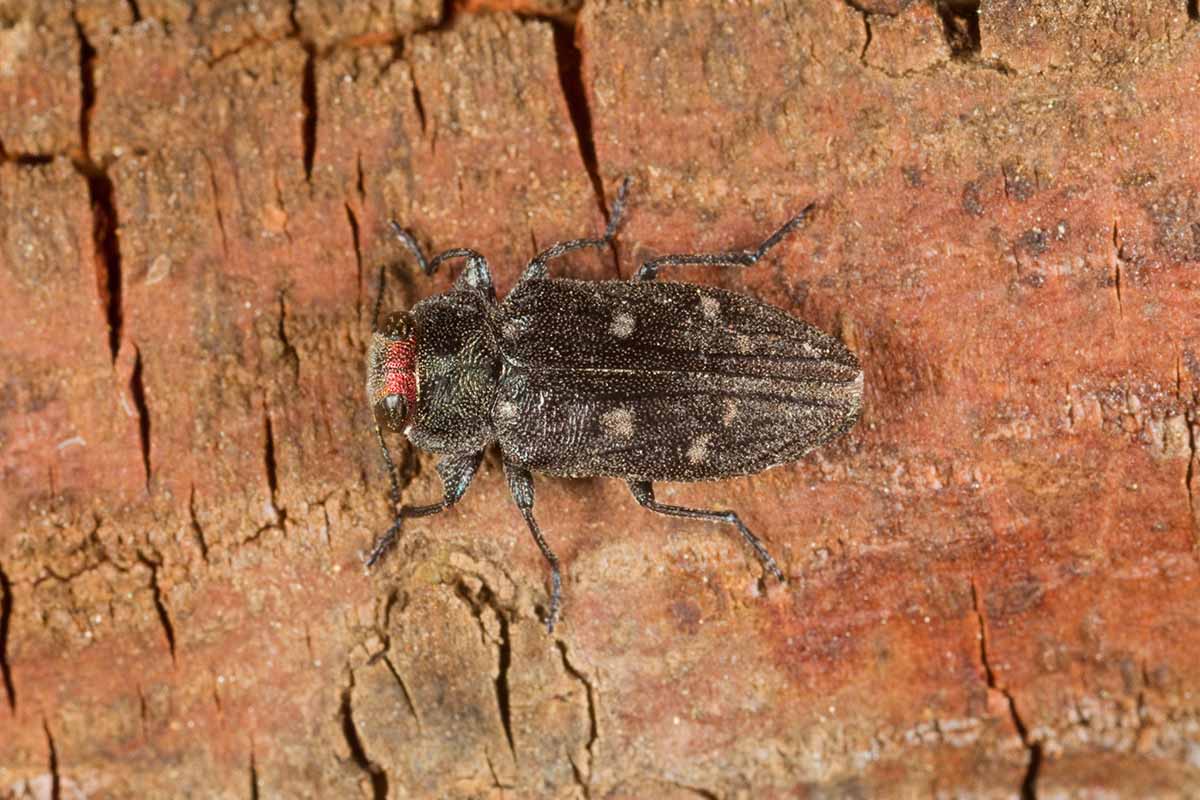
The reddish-bronze, metallic beetles are about half an inch long.
The females lay eggs in summer that emerge as larvae a few weeks later and bore through the wood of the plant. Young trees might be girdled at the graft union or main trunk, while older specimens will have girdled branches.
They leave long tunnels in the wood that reduce the tree’s vigor and invite other pests and disease-causing pathogens to come in.
Keeping the tree in good health is the first step to avoiding borers since they prefer sick or damaged specimens. Young and/or stressed trees should be treated with a pyrethrin every two weeks, starting in late June through August, to kill the adults.
Monterey Take Down Garden Spray
Arbico Organics carries Monterey Take Down Garden Spray in 32-ounce ready-to-use bottles or as concentrates.
5. Codling Moths
I hate codling moths (Cydia pomonella). I could write an entire book on how much I despise them. I don’t love garden pests in general, but these meddling little larvae really irritate me.
I don’t like to use chemical insecticides in my garden and if you feel the same, chances are you’ll be dealing with codling moths on your apple trees at some point. They’re that prolific.
Commercial growers have learned how to keep this pest under control using synthetic insecticides, and you can certainly do the same. If you want to try a less chemical-intensive method, there are options.
But first, let’s talk about what they look like and the damage they cause. Codling moths are about half an inch long, with light and dark gray banding on their wings.
At the end of the wings are shiny bronze scales, which are particularly pronounced on the males. Sounds kind of pretty, right? Don’t fall for that pretty face!

It’s not the moths that you have to worry about, it’s the larvae that do the damage. These half- to three-quarter-inch-long worms have a creamy white or pinkish body and a black head capsule.
They tunnel into the apple to feed on the seeds. When they’re done, they tunnel back out and find a place on the tree to spin their cocoon.
The damage they leave behind is black, rotten tissue where they enter and exit, and small holes called “stings” where they sample the fruit before moving onto a better fruit. Picky little jerks.
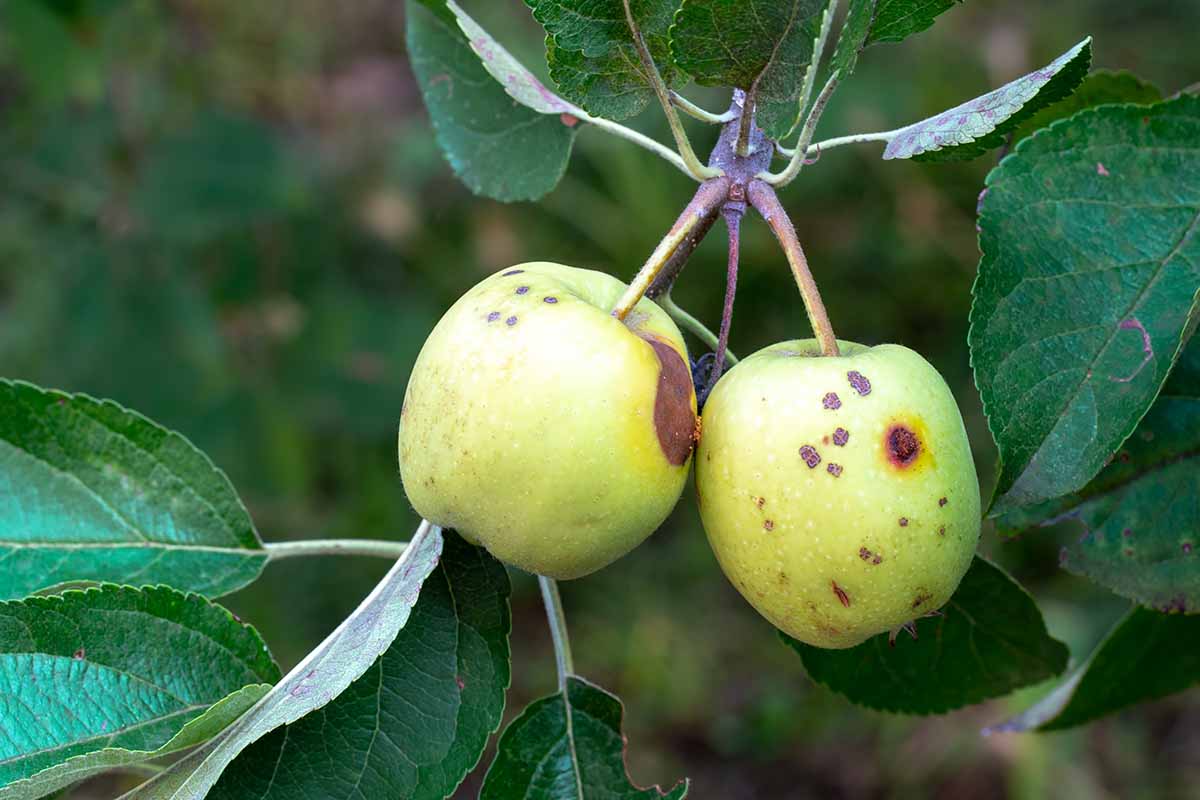
You might see frass around the entry and exit holes, and inside the apple, the core turns all rotten. The tunnels will also turn brown and rot, and fruit may drop from the tree.
After they’re done, you’re left with an apple that is either entirely inedible or that only has a few areas that you can slice out to eat. On the bright side, my chickens and horses appreciate the abundance in years that I don’t get around to controlling these pests.
In warmer regions, there are two generations, with just one in areas with a shorter growing season.
You can capture the adults with pheromone traps or use sticky bands on the trunk to catch the larvae to monitor for the presence of these pests.
Once you are sure you’re dealing with codling moths, it’s time to get to work. In my area (the Pacific Northwest), I don’t bother monitoring. I assume they’re present and I’ve never been wrong.
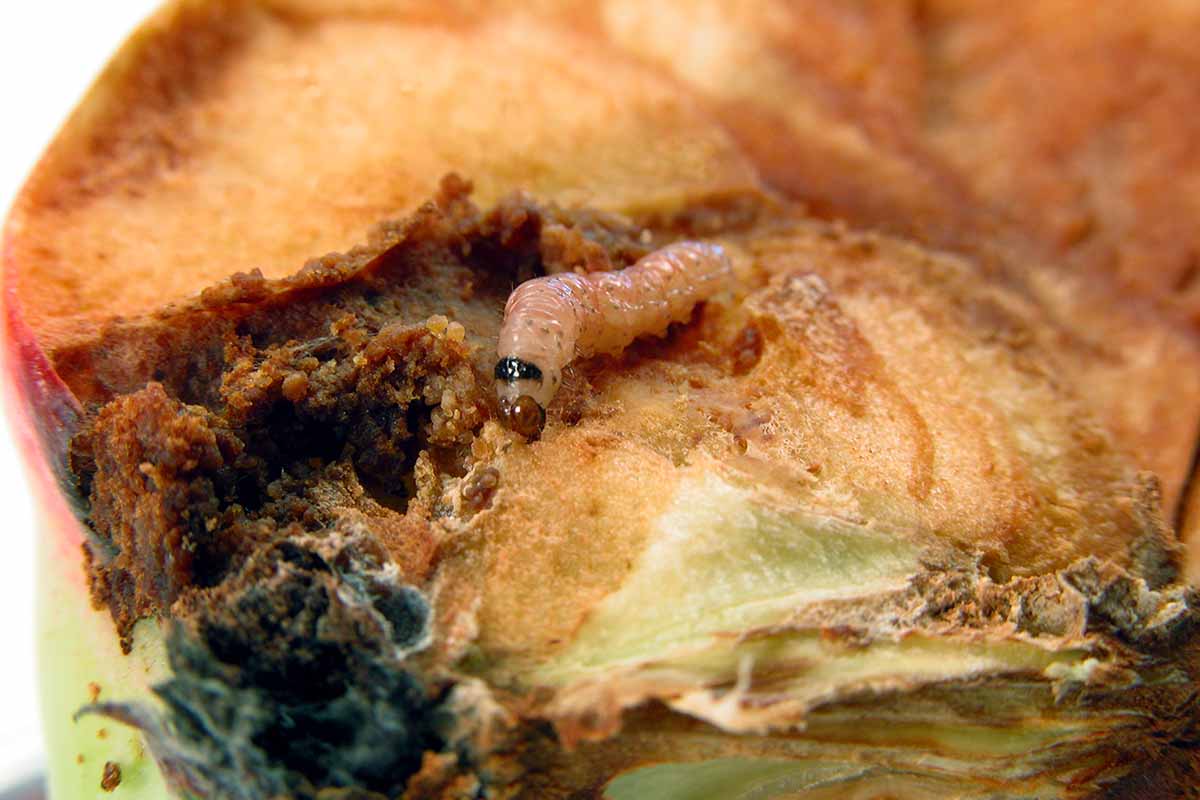
Most areas where apples are grown will have a government or university website that will tell you when populations are present in your area, since it varies from year to year depending on the weather and amount of rainfall.
While beneficial insects like wasps in the Trichogramma genus can offer a small measure of control, they won’t help enough to make a major difference. Instead, you need to rely on other methods.
First, pheromones disrupt the adults’ ability to find each other and mate.
Place traps out as soon as the flowers drop from the tree. Grab five or ten lures from Arbico Organics and place them inside a Scentry Plastic Delta Trap, also available at Arbico Organics in packs of five or ten.
You can also spray the tree with horticultural oil to smother the eggs.
If you really want to avoid chemicals altogether, you can bag the individual fruits in mesh bags. It’s pretty foolproof, but it’s labor intensive.
You should also prune out any fruit that is touching another piece of fruit. The larvae just love to use those spots for hiding as they start tunneling.
A product that contains kaolin clay like Surround WP, which is available at Arbico Organics in 25 pound bags, should be applied every six weeks, according to package instructions, once the adult moths appear.
Alternatively, use a pyrethrin every eight weeks at the first sight of adult moths, but only start applying it after the flowers have fallen – otherwise, you risk killing pollinators and reducing your harvest.
Spray at night because that’s when the moths are flying about and direct contact is the most effective.
If you want to break out the big guns, spinosad and carbaryl are effective and should be applied in the same way as pyrethrins.
Be extremely diligent about cleaning up fallen fruit to deny the larvae a place to hide. Add in some beneficial nematodes (the species Steinernema feltiae to be exact) to kill the larvae overwintering in the soil and you will be well ahead of the problem.
These nematodes are an excellent solution for all kinds of wormy problems, so it’s never a bad idea to have some on hand.
NemAttack Beneficial Nematodes
Arbico Organics has them in packs of five, ten, 50, 250, and 500 million.
It takes work, but you can get these pests under control. But you can see why I sometimes opt to just gift my horse and chickens piles of codling moth-damaged apples in the fall.
You can also cut out the damaged areas from the fruits and make applesauce or pies with the leftover bits. They’re perfectly fine, though the apples won’t store long at all thanks to the tunneling.
6. Fruitworms
Speckled green fruitworms (Orthosia hibisci) aren’t nearly as common as some of the other worm-like critters that want a piece of your fruit. But you should know about them because they can ruin your harvest.
The half inch-long worms are the larvae of adult moths in the Noctuidae family. The larvae emerge in spring and are easily identified by their lime green heads and green and white speckled bodies. They also have faint white lines running down their sides.
The larvae eat the leaves and skin of the developing fruit causing defoliation and fruit malformation.
Beyond being less common, another reason that these worms don’t enrage me the way codling moths do is that they’re pretty easy to control since they don’t hide inside the fruit.
Spraying with a product containing Bacillus thuringiensis v. kurstaki (Btk) every two weeks when the larvae are present is enough to get them under control.
Visit Arbico Organics to pick up a quart or gallon ready-to-use, or eight or 16 ounce concentrate of Bonide Thuricide if you notice these pests are present and get to spraying.
7. Leafhoppers
As with aphids and spider mites, leafhoppers are another type of sapsucking insect pest that feeds on the leaves and buds of apple trees. When they’re around, they cause white stippling to form on the foliage.
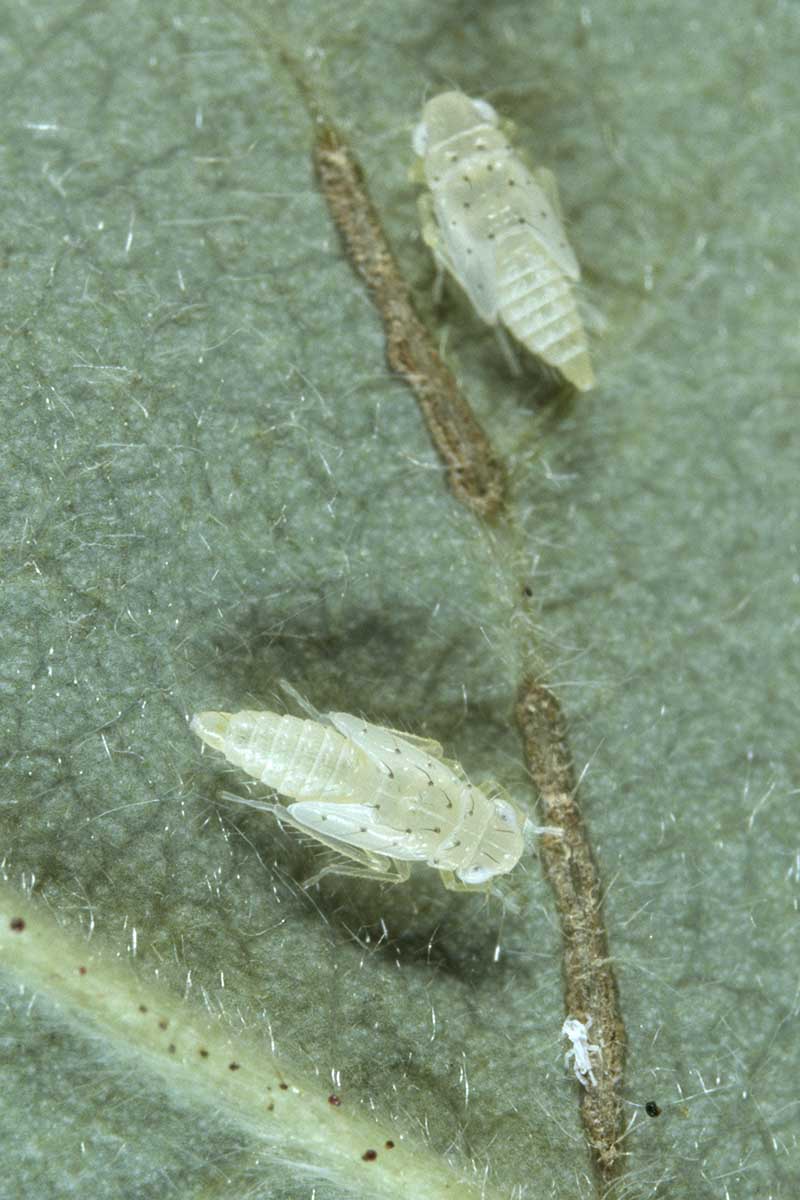
In apples, the white apple (Typhlocyba pomaria) and rose leafhoppers (Edwardsiana rosae) are the two types you’ll find, and they’re most common just before or during harvest time. They’ll leave behind honeydew and black spots (which is their poop) on the fruits.
They aren’t typically a problem unless they come around in large enough numbers.
If this is your first turn up to bat against leafhoppers, don’t panic. They’re common and pretty easy to control. Green lacewings will make a quick meal of them, and some insecticidal soap will finish the job.
Spray every two or three weeks when they’re present.
8. Scale
San Jose scale (Diaspidiotus perniciosus) is an extremely common apple pest in non-organic orchards and it can cause some serious damage.
The small, yellow adults use their tiny mouthparts to feed on twigs, branches, and foliage, and while you’d think by their size that they probably don’t cause too much damage, a large enough infestation can kill a tree.
As they age, they secrete a protective waxy substance that eventually turns from yellow to black. There can be up to four generations per year, so that’s a lot of potential feeding and damage.
When infested, the branches will start to crack and die and the overall tree will look sad and stunted. Left unchecked, the pests might kill the tree entirely.
If you aren’t using organic gardening methods, consider switching. Because organic orchards avoid pesticide use, they tend to have enough good bugs around to keep the bag bugs under control.
Otherwise, use a dormant spray in winter to smother overwintering adults.
You can learn more about how to deal with scale in our guide.
9. Spider Mites
Spider mites are extremely common on apple trees, but they aren’t all that damaging, for the most part.
These arachnids use their piercing mouthparts to suck the sap from the leaves, creating brown and yellow stippling. If you notice these symptoms and look closely, you might also see fine webbing.
They can be present anytime during the growing season, but they love hot, dry weather best.
Spider mites in the garden aren’t necessarily a bad thing, as they are an important food source for lots of beneficial insects. But too many of them can indicate that you have an imbalance in your garden, and large infestations can seriously harm young or drought-stressed specimens.
If you notice webbing and stippling on your apple trees, look closely for tiny moving insects. Red spider mites (Tetranychus urticae) are most common, but there are green, black, and brown ones, too.
Spraying with insecticidal soap or horticultural oil can knock down these pests, and beneficial predators such as predatory mites, assassin bugs, and green lacewings can be used for biological control.
Learn more about dealing with spider mites in our guide.
10. Tent Caterpillars
Tent caterpillars are perhaps some of the scariest looking pests. Not just on this list, but in general. They weave giant webs and hundreds of them will hang out together in these “tents.”

One day you’re walking around your garden and you look up, only to see a wiggly, wriggling mass of worms in what looks like the world’s biggest spider web.
Ironically, they’re probably the least worrisome pest on this list.
Not only do they rarely cause serious damage to a tree, but you can just sweep them out with a rake and go about your day. Learn more about tent caterpillars in our guide to decide what, if anything, to do if you find them in your trees.
11. Thrips
All kinds of thrips species are fans of apples, though pear (Taeniothrips inconsequens) and western flower thrips (Frankliniella occidentalis) are most common.
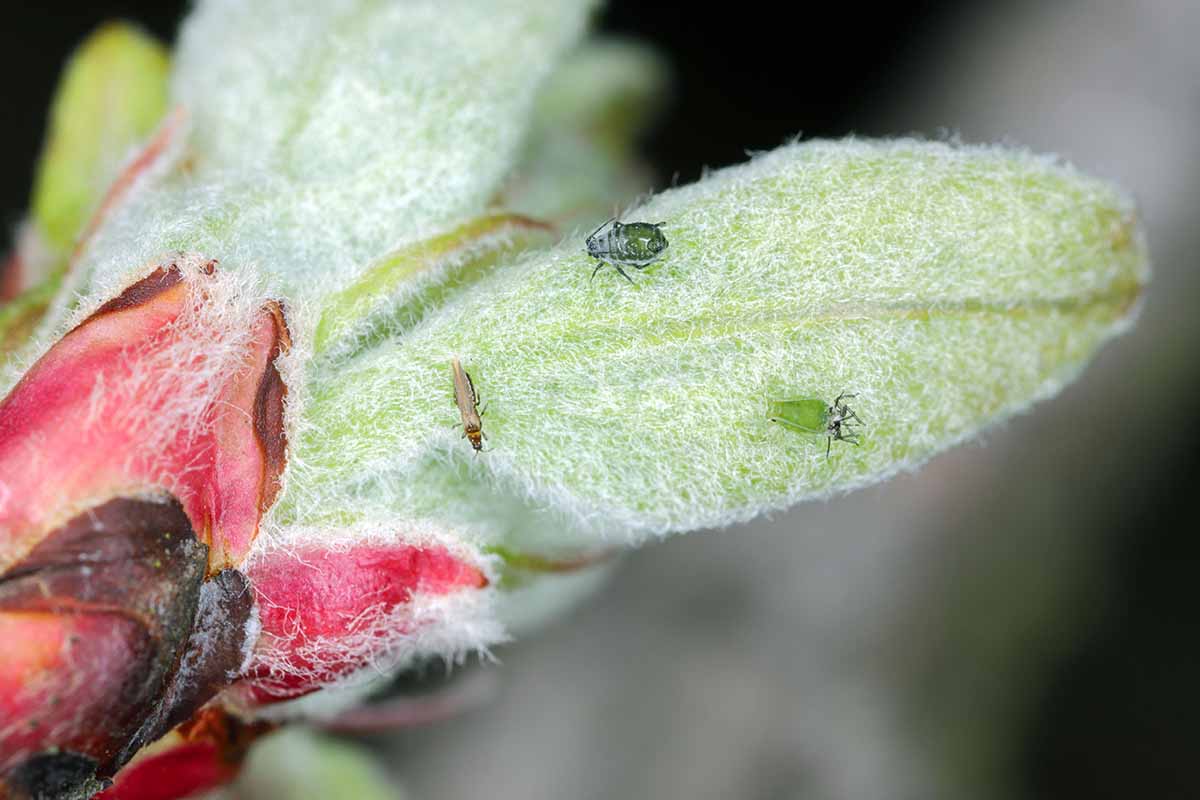
These one-millimeter-long, slender pests use their mouthparts to suck out the sap of plant tissue. They particularly like to enter the buds to start feeding and lay their eggs. When this happens, the bud is often destroyed.
To learn more about thrips, visit our guide for plenty of information about these common insects.
Prevail Over Apple Pests
There are undeniably a large number of apple pests and they’re far more common than we’d like. But armed with these tips, they don’t have to be a big deal.
Knowing what to look for and how to manage the situation means you can save your harvest from codling moths or show troublesome aphids the door.
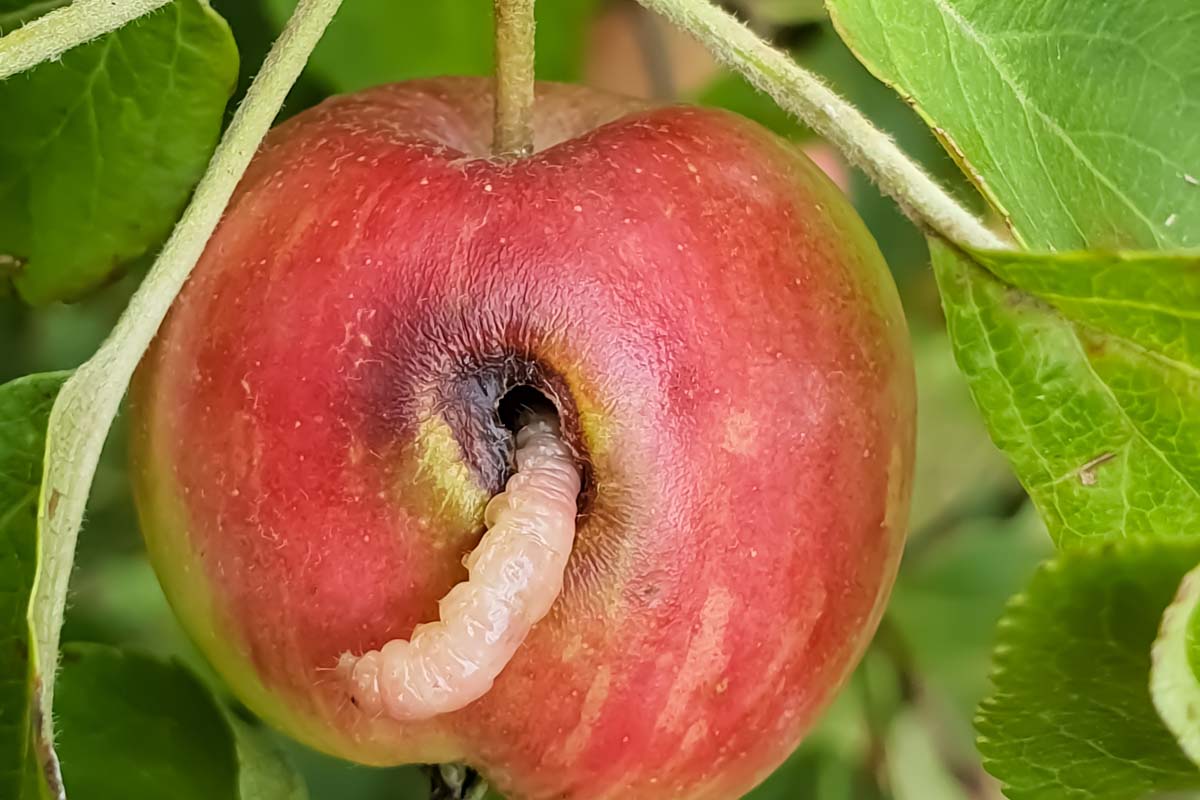
What apple tree pests are you currently dealing with? What kind of damage are they causing to your trees? Share your woes in the comments section below and we’ll do our best to help.
In the meantime, you can learn more about growing apples in the following guides:
